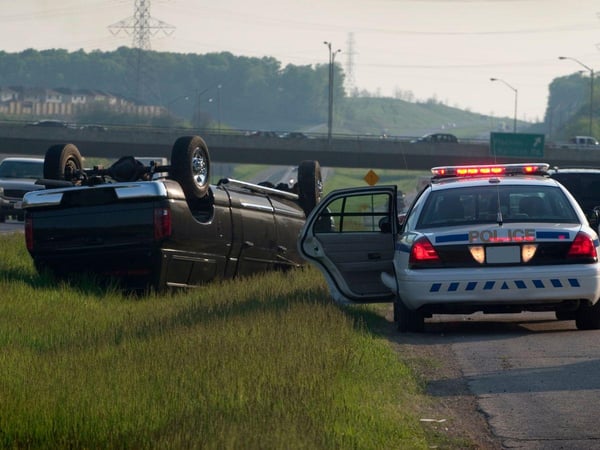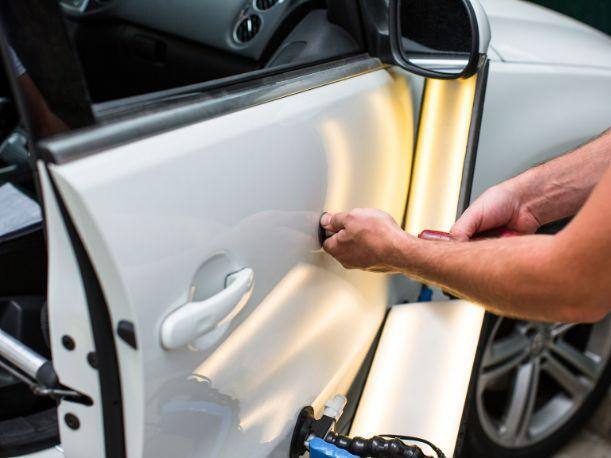Key Takeaways:
- Understanding Negligence: In car accident cases, it's crucial to understand negligence, which involves identifying negligent behaviors and establishing the elements of negligence.
- Proving Negligence: Evidence such as police reports, witness statements, and accident scene photos is essential to successfully prove negligence.
- Seeking Legal Help: For accident victims seeking fair compensation, consulting with an experienced personal injury attorney like Julian Lewis Sanders is vital for navigating the legal process and ensuring your rights are protected.
Understanding the concept of negligence is crucial in car accident cases.
Negligence refers to a failure to exercise reasonable care, leading to an accident and injuries. It determines the responsible party and the types of compensation for car accident victims and personal injury claims.
This article will explore the elements of negligence, how to prove it, and its impact on car accident claims.
Stay informed to effectively navigate legal challenges.
Table Of Contents
The Four Elements of Negligence
Four key elements must be proven to establish negligence in a car accident case:
- Duty of Care: Every driver has a legal obligation to exercise reasonable care on the road to prevent harm to others. This duty involves adhering to traffic laws, maintaining attention to driving, and ensuring the safety of other road users, including pedestrians, cyclists, and other motorists.
- Breach of Duty: A breach of duty occurs when a driver fails to uphold their duty of care. Examples of this breach include distracted driving (such as texting while driving), driving under the influence of alcohol or drugs (drunk driving), speeding, or disobeying traffic signals. Any action that deviates from the behavior of a prudent person under similar circumstances can be considered a breach.
- Causation: There must be a direct causal link between the breach of duty and the accident. The negligent actions of the driver must be demonstrated to have directly led to the accident and the resulting injuries. This connection is crucial for establishing liability in a personal injury claim.
- Damages: The final element involves proving that the injured party suffered actual damages due to the accident. These damages can be physical, emotional, or financial. They may include medical expenses, lost wages, property damage, pain and suffering, and other related costs.
Proving these four elements is essential for accident victims seeking compensation through personal injury claims.
Each element must be clearly established to hold the negligent party accountable and secure a fair settlement or court award.
Types of Negligent Driving Behaviors
Negligent driving behaviors are actions that put other road users at risk.
Common examples include:
- Distracted Driving: This involves any activity that diverts the driver's attention from the road, such as using a cell phone, eating, or adjusting the radio.
- Drunk Driving: Operating a vehicle under the influence of alcohol or drugs impairs a driver's reaction times, decision-making abilities, and overall control, making it a serious form of negligence.
- Speeding: Exceeding the speed limit or driving too fast for road conditions reduces the driver's ability to react to sudden hazards.
- Running Red Lights and Stop Signs: Disobeying traffic signals is a clear violation of traffic laws and a common cause of accidents.
- Tailgating: Following too closely behind another vehicle leaves inadequate stopping distance, increasing the risk of rear-end collisions.
- Failure to Yield: Ignoring right-of-way rules at intersections or when merging can lead to collisions with other vehicles or pedestrians.
These behaviors demonstrate a lack of reasonable care and lead to accidents, resulting in personal injury claims against the negligent driver.

Proving Negligence in a Car Accident Case
Proving negligence in a car accident case requires a careful collection and presentation of evidence.
Police reports are a critical source of information, often containing the responding officer's observations and details of the accident.
Witness statements can provide invaluable insights into the events leading up to the collision, shedding light on the drivers' behavior.
Photographs taken at the accident scene can document crucial details like road conditions, vehicle positions, and visible damage, which are essential for reconstructing the accident.
Medical records are vital for establishing a direct link between the accident and the injuries sustained, documenting the nature and extent of the physical harm suffered by the injured party.
In some cases, expert testimony from accident reconstruction experts or medical professionals may be necessary to provide specialized insights that support the claim.
An experienced car accident attorney can play a pivotal role in gathering and presenting this evidence effectively, ensuring that all relevant information is utilized to build a compelling case for negligence.
Comparative Negligence in Car Accident Claims
In car accident cases, the concept of comparative negligence plays a crucial role in determining fault and compensation.
This legal principle acknowledges that more than one party can be at fault in an accident.
Under comparative negligence laws, the fault is allocated among the involved parties based on their degree of responsibility for the accident.
For example, if you are found to be 20% at fault for an accident caused by distracted driving and the other driver is 80% at fault for speeding, your compensation would be reduced by your percentage of fault.
So, if the total damages were $10,000, you would be eligible to receive $8,000 after the 20% reduction.
Comparative negligence laws vary from state to state.
Some states follow a "pure" comparative negligence rule, where you can recover damages even if you are 99% at fault.
Others follow a "modified" rule, where you cannot recover if you are more than 50% or 51% at fault.
Understanding comparative negligence is essential for accident victims seeking compensation, as it directly affects your compensation.
The Role of a Personal Injury Attorney
Navigating negligence claims and securing fair compensation in car accident cases often require the expertise of a personal injury attorney.
Legal representation is crucial for understanding complex legal terms, interpreting comparative negligence laws, and effectively communicating with insurance adjusters. That's why it's important to hire a trusted Personal Injury Attorney in Atlanta at your side.
To build a strong case, an experienced personal injury lawyer can gather compelling evidence of negligence, such as accident scene photos and witness statements.
Personal injury attorneys also play a vital role in negotiating with insurance companies to ensure accident victims receive the compensation they deserve for medical bills, property damage, and other quantifiable losses.
With a knowledgeable legal professional by your side, you can focus on your recovery while your attorney handles the legal battle.
Posted by Julian Lewis Sanders
At The Law Offices of Julian Lewis Sanders & Associates, we understand the gravity of personal injury situations - it's our priority. Committed to aiding you in your time of need, we specialize in listening to your story, discerning your individual needs, and swiftly executing strategic actions to secure the compensation you deserve. Based in Georgia, our legal team comprises experienced personal injury attorneys dedicated to delivering optimal service tailored to your unique circumstances.
Facebook




